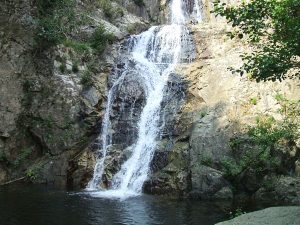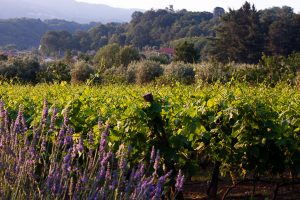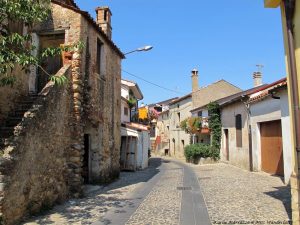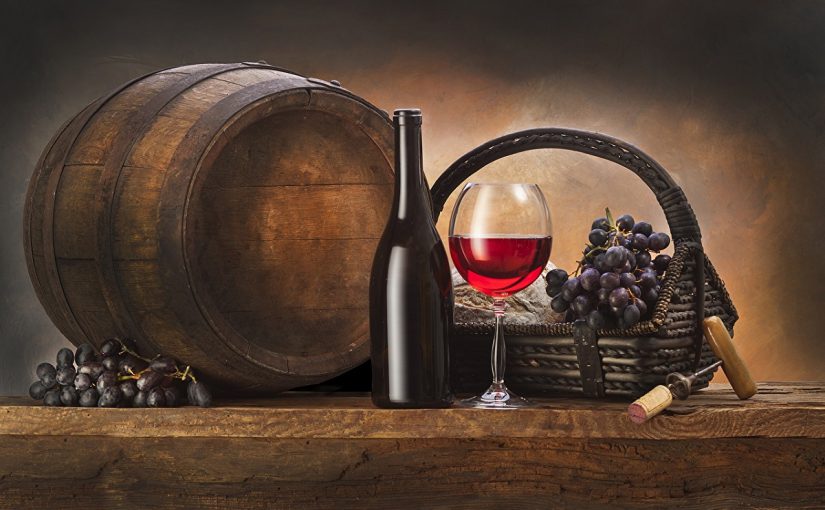14.1.2020
THE VALLEY OF WINE
The Donnici DOC wine is located inside a large zone, starting from the south of Cosenza on the western slopes of the La Sila plateau, and arriving until the valley of the “Crati” river. This valley represents the sole outlet of the basin created by the surrounding mountains. Its wine well represents the beating heart of that magnificent Mediterranean gastronomy which Calabria owns.
The strategic position of the valley, as route through the mountains, well explain why all invaders of Calabria loved to have a military control here…but probably to make grow vineyards was a better reason!

The production of so-called “Donnici DOC” inside the valley is mainly red wine, made from Gaglioppo with some blending of Greco Nero and Mantonico Nero.
Anyway, DOC area is larger; Donnici is produced in a large winemaking area that extends from the western slopes of the Sila Mountains to the shores of the Tyrrhenian Sea. Output is concentrated in the valley of the Crati, which extends toward the north, and in that of the Savuto River, which extends toward the south. However, the Crati district is the more important of the two.
Such red-grape varieties as Gaglioppo and Greco Nero are cultivated in the valley of the Crati. Among the white-grape breeds, the Mantonico and Malvasia are the most important, along with the recently introduced Pecorello.
The wine produced in that larger area has a medium body and ranges in color from ruby to cherry red. The vineyards are located at altitudes varying from 300 to 600 meters above sea level. Nowadays, the production area includes the territories of various municipalities in the province of Cosenza.

Anyway, the name of the vineyards comes from a little estate perched on a broad knoll of land, the village of Donnici. Here the vineyards are cultivated in the sunniest areas of the estate, refreshed by the winds blowing from the Sila and protected by century-old olive trees.
DIFFERENT TYPES OF DONNICI WINE
The original classification as DOC of 1975 describes this excellent wine as coming from the Hills south of Cosenza, red color or bright red, dry, fresh, with good body and pleasantly winy aroma. Alcohol is 12%; aging is two to three years, at least six months in wood. Perfect with roasts.
There is also a white wine, dry, perfect for all meals, and a “Rosé” (Rose color), dry.
Given that Donnici is sub-region of the Terre di Cosenza DOC, in the Calabria region of deepest southern Italy, it is natural that it was absorbed by the larger area of “Terre di Cosenza” in 2011, along with its neighbors Pollino, San Vito di Luzzi and Verbicaro.
However, the Donnici DOC was originally introduced in April 1975 and got a distinctive wine appellation and near the town of Donnici has an intense color, different from that of the larger area of DOC.

At the moment, wines made under the larger area of “Terre di Cosenza Donnici” title come in red, white and rosé (rosato) forms, but they are made from various blends of Gaglioppo, Greco Nero, Nocera and Calabrese (Nero d’Avola), their white counterparts use the Greco Bianco, Malvasia Bianca and Ansonica, the red (rosso) wines are sometimes made in a novello style, similar to that of Beaujolais Nouveau, the “riserva” wine must be at least two years old before its commercial release, and must have spent at least six months in barrel.
The wines made from vineyards around Cosenza, in the upper Crati River Valley, are partially protected by the western slopes of the Sila Grande plateau. That slopes and peaks, which create a sheltered environment in which to grow the vines, surround all vineyards, giving a natural protection to the plants.
Most Donnici vineyards take advantage of the slightly increased altitude here, and vines are planted between 1300ft and 1975ft (400m and 600m) above sea level.
The minor proximity of the Mediterranean is important to the terroir; the intense heat is moderated only by the wind, but it suffices to avoid fungal diseases.
TABLES OF FEATURES
Calabria gastronomy owns the following Donnici labels:
- Donnici Bianco, White wine, Alcohol 11.0%, white with yellow or greenish glint, fresh, winey, pleasant, distinctive, dry, full, harmonic, and sometimes fruity. Grapes: Greco Bianco 0.0%-30.0%, Malvasia Bianca 0.0%-30.0%, Montonico Bianco 50.0%-100.0%.
- Donnici Rosso Novello, Red wine, Alcohol 12.0%, ruby red to cherry red, winey, pleasant, full, dry, harmonic. Grapes: Gaglioppo 50.0%-100.0%, Greco 0.0%-10.0%, Greco Nero 10.0%-50.0%, Malvasia Bianca 0.0%-10.0%, Montonico Bianco 0.0%-10.0%, Pecorello 0.0%-10.0%.
- Donnici Rosato, Red wine, Alcohol 11.0%, pink more or less intense, distinctive, soft, fresh, harmonic. Grapes: Gaglioppo 50.0%-100.0%, Greco Bianco 0.0%-10.0%, Greco Nero N. 10.0% -50.0%, Malvasia Bianca B. 0.0%-10.0%, Montonico Bianco 0.0%-10.0%, Pecorello 0.0%-10.0%.
- Donnici Rosso, Red wine, Alcohol 12.0%, ruby red to cherry, winey, pleasant
full, dry, harmonic. Grapes: Gaglioppo 50.0%-100.0%, Greco Bianco 0.0%-10.0%, Greco Nero 10.0%-50.0%, Malvasia Bianca 0.0%-10.0%, Montonico Bianco 0.0%-10.0%, Pecorello 0.0%-10.0%. - Donnici Rosso “Riserva”, Red wine, Alcohol 12.0%, ruby red to cherry red, winey, pleasant, full, dry, harmonic. Grapes: Gaglioppo 50.0%-100.0%, Greco Bianco 0.0%-10.0%, Greco Nero 10.0%-50.0%, Malvasia Bianca 0.0%-10.0%, Montonico Bianco 0.0%-10.0%, Pecorello 0.0%-10.0%.


